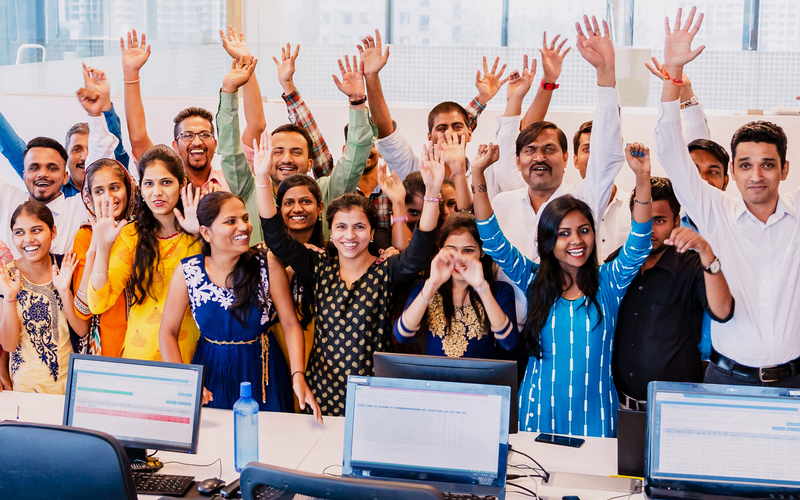Podcast Audio Transcript
Alisha: Hello listeners, this is Alisha; thank you for tuning in to yet another exciting and informative podcast from us at Infosys BPM. Today, we are discussing about overcoming unconscious bias – the strategies for creating a diverse and inclusive workplace. And to talk about this, we have here with us, Isabel Bartholomeu, Sr. Lead – Client Operations & Services. Welcome Isabel. How are you?
Isabel: I’m doing great Alisha. It’s nice to be here on this podcast.
Alisha: It’s great to have you with us today.
Our topic of the day is quite an important one in today’s corporate culture. So, shall we start off by clearly defining unconscious bias for our audience?
Isabel: Absolutely. Unconscious bias is something which is not always clearly understood by everybody. In plain terms, this refers to the social stereotypes and prejudices that we hold about certain groups of people without realizing it. These biases can influence our decisions and actions at the workplace, such as whom we hire, promote, or assign tasks to. They can also affect how we interact with others, which can create a toxic work environment for people who belong to marginalized groups.
For instance, a hiring manager might unconsciously prefer candidates who have a similar background or educational experience to their own. This can lead to the exclusion of qualified candidates from underrepresented groups. Another example is gender bias, where people might unconsciously assume that men are better suited for leadership roles, or that women are more nurturing and better suited for administrative roles.
Alisha: I see what you mean. It’s very much evident that we need to have objectivity in all of these processes. I am reminded of a recent survey where more than 60% of respondents believe there is bias at their workplace.
So, how can we increase awareness of unconscious bias at the workplace, and what can we do to mitigate its effects?
Isabel: Quite an important point, Alisha.
One way to increase awareness is to encourage open conversations about diversity and inclusion. We can also provide training to employees on how to identify and mitigate unconscious bias in their decision-making processes. Additionally, we can create objective workplace practices and processes that reduce the impact of bias. For instance, we can use structured interviews and standardized evaluation criteria to reduce the influence of personal biases on hiring decisions.
Organizations should conduct workshops, webinars, or online courses that teach employees how to recognize and mitigate unconscious bias. They should also provide employees with resources such as books, articles, and videos that explore the topic in more detail.
Alisha: Absolutely. Infosys has a brilliant culture of diversity and inclusion. The organization is very committed to this cause.
Could you touch upon what you do at the organizational level to eliminate or mitigate instances of unconscious bias?
Isabel: As a leading global organization, Infosys recognizes the importance of promoting a diverse and inclusive workplace; we have taken several measures to eliminate or mitigate instances of unconscious bias and promote objective workplace practices.
One of the ways Infosys addresses unconscious bias is through its comprehensive diversity and inclusion strategy, which is designed to foster an environment where all employees feel respected, valued, and empowered to contribute to the company's success. This strategy includes several initiatives, such as:
- D&I trainings for all employees
- Blind resume screening, where we remove bias-forming information such as name, gender, nationality, etc., during screening
- Processes in place to gather feedback from underrepresented groups
- An inclusive leadership focused on empathy, active listening, and building relationships based on trust and respect.
We are committed to increasing the diversity of our workforce by attracting and retaining employees from diverse backgrounds. We have several programs aimed at increasing the representation of women, people with disabilities, and other underrepresented groups in the technology industry.
By implementing these initiatives and promoting a culture of diversity and inclusion, we aim to mitigate the impact of unconscious bias and promote objective workplace practices, ultimately creating a more diverse and inclusive workplace.
Alisha: That’s amazing, Isabel. I would like to thank you for coming to this podcast and discussing this important topic with us.
Isabel: Thank you, Alisha. It was indeed a pleasure to be here on this platform.
Alisha: Dear listeners, if you enjoyed our podcast today, please don’t forget to share and like it on social media. Our social handles are mentioned in the podcast page. The podcast will be available on various platforms like Google Podcasts and Spotify, in addition to our website.
Also, if you have any queries, do reach out to us through the email address on the podcast description. Watch this space for more exciting podcasts coming up. Once again, thank you for tuning in, stay safe, sharp, and healthy. Have a nice day!






